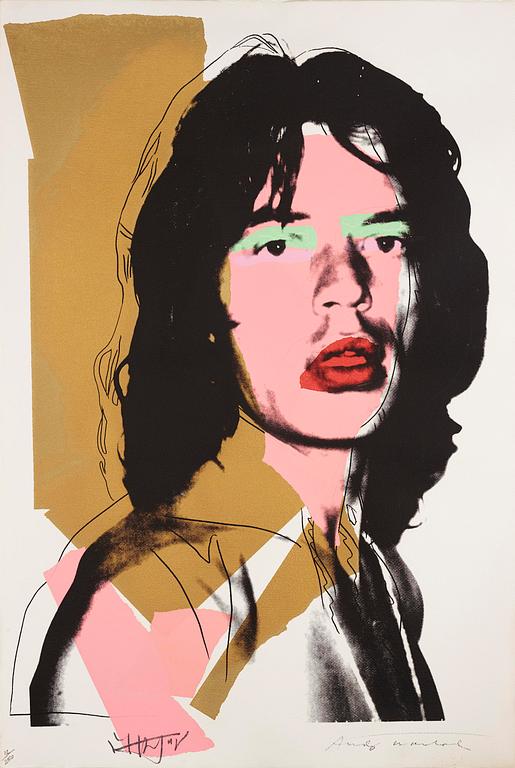Andy Warhol
"Mick Jagger"
Signed in pencil by Andy Warhol and also signed in black felt tip pen by Mick Jagger, numbered in pencil 12/250. Screenprint in colours, 1975. Printed by Alexander Henrici, New York, published by Seabirds Editions, London. S. 110.5 x 73.2 cm.
Kirjallisuus
Feldman & Schellmann II. 143.
Muut tiedot
Andy Warhol's artistic exploration of fame and celebrity extends beyond his iconic works to his very lifestyle. Embedded within New York's elite social circles from the 1960s onwards, Warhol engaged with figures ranging from Bill Murray to John Lennon, but it was his relationship with Mick Jagger that stands out as particularly significant. Their friendship, often highlighted in Warhol’s biographies and publicized in the media, became emblematic of the glamorous and rebellious jet-set culture of the 1970s.
Warhol spent much time with Jagger and his then-wife Bianca, and their dynamic was a defining feature of the period's artistic and social scene. When Jagger commissioned Warhol to design the cover for the Rolling Stones’ Sticky Fingers album in 1971, Warhol was granted complete artistic freedom. The resulting image — a close-up of Joe Dallesandro’s crotch in denim — became one of the most provocative and boundary-pushing visuals in rock and roll history, encapsulating the raw, sensual energy of the band and their defiance of societal norms.
The collaboration between Jagger and Warhol continued into the mid-1970s. In 1975, Warhol released a portfolio of 10 silkscreen prints based on intimate photographs of Jagger taken by the artist himself. This series has since become one of Warhol’s most celebrated celebrity-themed works, demonstrating the artist’s fascination with the cult of fame and his ability to elevate everyday imagery into high art. Much like the Sticky Fingers album cover, the Mick Jagger silkscreens remain an enduring symbol of the powerful personalities of two of the most influential cultural figures of the 20th century.






































